| |
|

FRIDAY, JULY 11 Ohr Shalom Zamru at the Bay
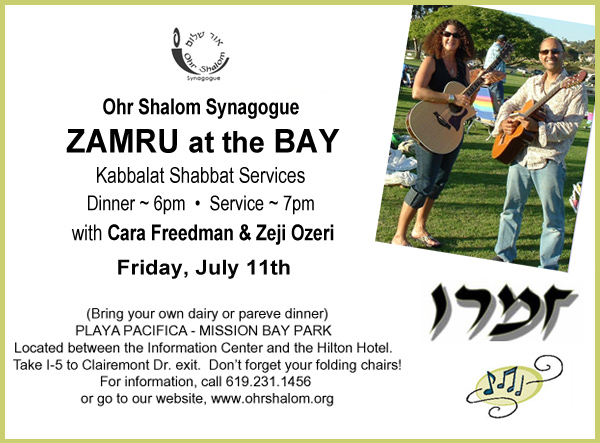

FRIDAY, JULY 18 Temple Solel Shabbat at Beach
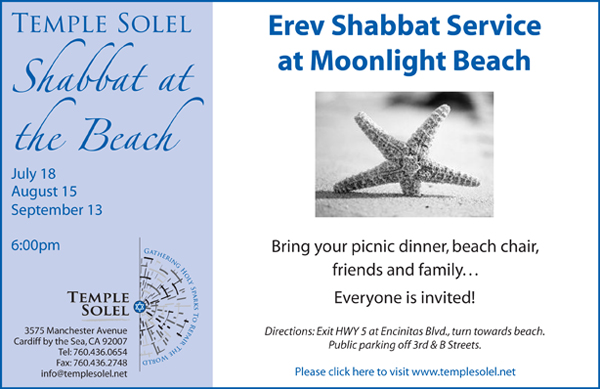

MON., SEPT. 29-THURS., OCT. 9


LETTER FROM JERUSALEM
'Gabriel's Revelation' may alter Jewish, Christian concepts of interrelationships
By Ira Sharkansky
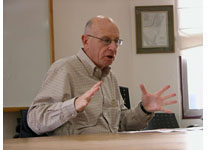 JERUSALEM—Another discovery may shed light on the period prior to the birth of Jesus, and add to discussions about Judaism and Christianity. JERUSALEM—Another discovery may shed light on the period prior to the birth of Jesus, and add to discussions about Judaism and Christianity.
What is called "Gabriel's revelation" is a stone tablet with 87 lines of Hebrew writing. It describes a prominent national leader who died and came to life after three days.
A day after an article about the stone appeared in the New York Times, a Hebrew translation of the Times article began on the front page of the Israeli newspaper, Ha'aretz. That evening two professors from the Hebrew University appeared on a major television news program to discuss its significance.
Analysis of the stone has appeared in a prominent journal serving the professions of archaeology and biblical studies. Experts quarrel about individual words that are blurred, and may be crucial to the interpretation. The provenance of the stone, or its history and authenticity, may yet be subject to dispute.
Given the standing of scholars who have invested their time in the stone, we can at the least speculate about its impact on conceptions of Judaism and Christianity at about the time of Christ.
A prominent conclusion is that an important element in the story of Jesus is not unique. Jewish ideas of that time and earlier also conceived of a messianic figure who would die and come back to life.
Add this to readings of Jesus' preaching that find them similar to ideas expressed by Hebrew prophets for several hundred years. The conclusion is that Jesus did not differ from other individuals circulating in the Jewish community. The Roman occupation was oppressive. It produced not only the rebellion of Jesus as described in the New Testament, but two widespread uprisings of Jews, including one civil war. It is not surprising that the period included messianic figures who were said to produce miracles, and predicted an end to suffering.
The New Testament is not the work of Jesus, but appeared several decades after his death. The claim that he is the messiah, along with reports of his virgin birth and resurrection came from his followers. They worked to elevate his status, and distinguish themselves from the Jewish establishment. Ideas about the corruption of Jewish leaders, their lack of morality, and their inflexible preoccupation with small details of law appear in the New Testament, and made their contribution to anti-Semitic stereotypes promoted by Christian Churches subsequently.
Jesus might have had the standing to earn a place in a Hebrew Bible if it was not for his followers. It is they who declared war against the Jews, and made it difficult for Jewish scholars over the years to view with equanimity the affinity between Jesus and Judaism.
Writing by Christian and Jewish scholars in recent decades have contributed to a rapprochement that sees Jesus not only as a Jew, but as one who reflected sentiments apparent in Jewish thought at the time of his life. Commentators see the Holocaust as impacting on the work of Christians about Judaism. Jewish scholars have contributed their own evolving ideas about Christianity. Pope John Paul II symbolized the new spirit when he referred to Judaism as Christianity's older brother while on a visit to Jerusalem in the year 2000.
No one should expect Christian churches to fold themselves into Judaism, or to be received as Jews as a result of the stone called Gabriel's revelation. Theological tensions remain. Religious movements resemble government bodies and large corporations. The perpetuation of their structures, key personnel, laws, traditions, and customs take priority over new ideas that challenge what is well established.
New discoveries may nonetheless blunt antipathies between religious communities as they pass from scholars to professors of religious history and theology, and eventually to teachers in religious schools and preachers. We may also hope that something will come out of an invitation for an Israeli rabbi to attend an interfaith conference in Spain, organized by the World Muslim League, and sponsored by King Abdullah of Saudi Arabia.
The applause would be louder if the conference was in Saudi Arabia, and if a Saudi official did not deny that an Israeli rabbi had been invited.
Currently we have to rest with the realization that it has been a while since Christian authorities burned Jews. Hopefully it will not take as long for the jihads to stop, and for leaders of all the Muslim countries to welcome Israel's presence in the Middle East.



THE JEWS DOWN UNDER
My grandson's bar mitzvah—and mine
By Garry Fabian
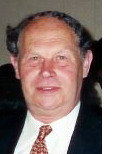 MELBOURNE—Last weekend, we celebrated our youngest grandson, Steven's bar mitzvah, an important and significant occasion that made me reflect on my own bar mitzvah 61 years ago, in another place and setting, another time and a different emphasis on its deeper significance. MELBOURNE—Last weekend, we celebrated our youngest grandson, Steven's bar mitzvah, an important and significant occasion that made me reflect on my own bar mitzvah 61 years ago, in another place and setting, another time and a different emphasis on its deeper significance.
It took place early in 1947; just 18 months after the end of the war, and our liberation from the Theresienstadt ghetto, where we had spend almost three years.
After liberation we returned to the town in the Czech Republic where we had lived before the war, where prior to 1938 the Jewish community consisted of around 500 members.
After the war, a few who had survived the Holocaust, and some who returned from England where they had spent the war years, constituted the Jewish community of the town, Podmockly. They numbered no more that 30 – 40 souls. Miraculously the rabbi of the congregation had survived a series of concentration camps and returned to the town to minister the small Jewish remnant.
My bar mitzvah was quite a landmark, not only for me, but for the whole community, as 13 year old Jewish boys in Europe during the years after the Holocaust were a rare, one could almost say, a unique species.
My bar mitzvah was held at our modest home, as the synagogue had been destroyed and not rebuilt, and a handful of friends from across the country, who had survived the war, joined the small community in the town to celebrate this momentous, and for me very important milestone. It was not only a celebration of reaching adulthood in the Jewish sense, but a celebration of life, one life saved, when close to two million of children who would have reached this milestone in normal times, had perished.
As we sat in the large and almost overflowing synagogue here in Melbourne last Shabbat, surrounded by all the pomp and trappings of an extended Shabbat service and my grandson performing his Parshat - Parshat Chukkat – which I listened to with great pride, I reflected back to that January day back in 1947, the different circumstances, setting and the meaning of that special day.
This became even more contrasted the next day, at the informal celebration of the event. As seems to have become the norm in our society today, it was a lavish affair with close to 250 guests, a large dinner, a band, entertainment, PowerPoint presentations, elaborate table decorations, the whole event being video taped for posterity.
Once again my mind went back to my own day, when the celebrations consisted of a modest dinner in our home for a small remnant of family and friends.
We seem to have lost a little of the religious significance of the step from boyhood to manhood that is marked by the actual bar mitzvah ritual, and have seen it turned into a major social occasion. I ask myself the question – have we lost the plot when it comes to the true significance of the event, or am I just becoming an “crabby old man” with the passing of time?
Perhaps my excuse is those different times, different social settings, different life experiences call for different modes of celebration to mark important life events.
But at the end of the day, Steven’s bar mitzvah and mine have a very important link. My own bar mitzvah was living proof of surviving in circumstances that almost can be considered a miracle; his was living proof that the link in the family’s generational chain continues strongly into the future, as a real manifestation that despite what the Nazi grand plan for the Final Solution aimed to achieve, it did fail, if only for a very small remnant.
Shtetl of Zhetl inspires prize-winning essay
MELBOURNE - The King David School year 9 student Alon Loeffler has won first prize in the Jewish Community Council of Victoria’s (JCCV) Social Justice Committee’s essay competition.Alon, 15, was presented with his award at a ceremony at Beth Weizmann Community Centre on June 26.
His classmates, Melissa Cyngler and Ari Dancziger, received second and third place, respectively.
The competition invited Jewish history students to write on the topic, “The Migrant Experience -– My family’s story," with Alon’s winning story recounting his family’s experiences in the Belarusian town of Zhetl.
Alon’s grandfather escaped from Zhetl before the war, but many other members of his family either perished or lived in hiding during the war.
Alon’s story was read earlier this year at the reunion of the Zhetler survivors and their families in Tel Aviv.
Competition winners took home a book voucher, with a donation of equal value made in their name to the charity of their choice. Alon's essay follows:
The Migrant Experience
By Alon Loeffler
 Woodpecker a bird of astounding beauty. When people hear this word, they think of peace, of splendour and of freedom. Woodpecker a bird of astounding beauty. When people hear this word, they think of peace, of splendour and of freedom.
When I hear this word I think of shouts of agony and sadness, I think of cold blooded murder. I think of the Nazis, staring at their victims with bloodthirsty, death-like stares, like a pack of ravenous wolves, half starved to death.
But mainly, when I hear that word I think of Zhetl, of my family and of luck.
If someone came up to you on the street and asked you what Zhetl was, how would you respond? I know that before I heard this story I would have asked, “Who?”
Well, Zhetl is not a person, but a place. Zhetl also means ‘woodpecker’.
I will start from the very beginning of my knowledge. Zhetl is a small village in the Slonim district in what is now Belarus. No more than a few thousand people lived there before World War II. My family was among those few thousand.
Before I begin my story I will explain a bit about the ways of Zhetl. I can only describe it using one word. Shtetl is a Yiddish word that means a small, mostly Jewish village in which everyone knows one another.
There are not many shtetls left after the war, nor the people that used to live in them, but my story tells of a few of those ‘lucky’ survivors.
My great uncle, Zelic, would wake up every morning and know what his day would consist of: Chores, school, and some free time to play with his friends or ride his bike with his brothers and sisters.
Life was peaceful and simple in Zhetl. You could say this about every city, town or village in the world, but Zhetl was different.
It truly was an amazing place to live. Everyone was friends, and no-one suspected their neighbour of anything but caring too much.
His mother and father, Ida and Hertz Kaminsky, were incredible people. They raised seven children on their own.
Of course, they had help from the family when they needed it, but otherwise they would never ask for favours from anyone.
They worked their way through life like this, day in day out. Somehow I envy them, a life of simplicity and happiness. But then I think of what they had to go through, and the smile upon my lips fades.
The Holocaust. There are no words that can describe the true horror of this event, nor will I try and describe it.
I will ask this though, how can a person witness such torment on the human soul, and remain sane? How can a person live day after day, after losing so many loved ones so quickly? The answer to this question I will never know.
This is what Zelic and his family had to go through. This is what six million other Jews and many million more had to endure. Even if they were lucky enough to escape before the war, it still affected them immensely.
My grandfather, Menachem Kaminsky, was one of the people who were lucky enough to escape before the war in 1938. Even if at the time he did not know he was escaping.
He was sent by his father, Hertz, aboard the Morton Bay to Melbourne, Australia, to be with his uncle, after bribing a prison guard in the Lushinkes jail. Who would have thought that this trip to an unknown country saved my grandfather’s life?
Menachem was the luckiest one out of the whole family. He was the only one who did not undergo the Holocaust in front of his eyes. But that does not mean it did not affect him.
The war struck Poland like a hulking tidal wave upon an innocent tribe. The Nazis quickly took over most of the country, leaving a trail of death and destruction in their wake.
When they reached Zhetl, my family could do nothing. They stayed at home and built a shelter underneath the house, with an escape route. When the Nazis started murdering and deporting the Jews they hid in the shelter for the first day.
There, Rachel, Ida’s mother, choked and died. When nightfall approached they escaped to the surrounding forests. There they lived for three years, helping the partisans in anyway they could, and living like animals.
In an encounter with the Nazis, Ida and Chinke (Zelic’s sister) were shot to death. The rest of the family – Hertz and his children Henia, Pesia (Paula), Luba, Zelic and Sam – managed to survive.
In 1948 after the war had finished Zelic and Paula travelled to Melbourne to live with their brother, Menachem, aboard the Misser.
The rest of the Kaminsky family came later on, sometime during the 1950s. There, those who did not die still live today.
This is a story of heroism, of woe, of survival. It is the story of my family. It is the story of thousands of others, and yet it is their story alone.
Without the sacrifices they made, without their constant bravery and determination to endure, without each and every one of them, I would not be here today.
A woodpecker lands on a tree outside my window. I gaze upon its beauty and smile weakly. The beauty of life is relentless. The cruelty of man is unthinkable. This is my story.
Rabbi Yitzchok Groner dies aged 83
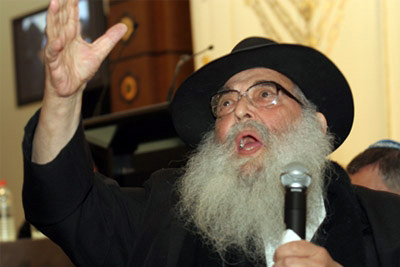 MELBOURNE - The leader of the Chabad-Lubavitch movement in Australia, Rabbi Yitzchok Dovid Groner, died on Monday morning after a lengthy illness. MELBOURNE - The leader of the Chabad-Lubavitch movement in Australia, Rabbi Yitzchok Dovid Groner, died on Monday morning after a lengthy illness.
It is expected that he will be buried in Israel alongside members of his family, but a memorial service will be organised in Melbourne in his honour.
Rabbi Groner, 83, arrived in Melbourne in 1958 from the United States as the head shaliach (emissary) of the Lubavitcher Rebbe.
He built up the Chabad community to its current sizeable population.
The Chabad community now includes the 1,000-student Yeshivah and Beth Rivkah Colleges, the Yeshivah Gedolah and countless Chabad synagogues and learning institutions around Melbourne.
Rabbi Groner’s children are continuing his work in spreading Yiddishkeit. His sons lead Chabad House of Glen Eira and Ohel Devorah and his daughter and her husband run Chabad House of Malvern.
His son-in-law, Rabbi Zvi Telsner, was appointed assistant rabbi of Yeshivah during Rabbi Groner’s illness.
Rabbi Groner’s work has been acknowledged across the Jewish and general communities.
On the occasion of his 80th birthday, then Prime Minister John Howard said “his service to the spiritual needs of countless members of the Jewish community, as rabbi, mentor, counsellor, or friend, has seen him develop the enviable reputation as the people’s rabbi."
Rabbi Groner was one of the giant figures, larger than life both physically and spiritually, in the Melbourne Jewish community for half a century, and while he was strictly Chabad, he was respected across the broad spectrum of the diverse Jewish religious scene during has half century of service to the Melbourne Jewish community.
Jewish groups avoid Diaspora study
MELBOURNE - A well-known Jewish academic has expressed concern that Jewish organisations have not taken up the opportunity to support a study of ethnic diasporas in Australia.
Associate Professor Danny Ben-Moshe from the Institute for Community, Ethnicity and Policy Alternatives at Victoria University has received a $300,000 grant from the Australian Research Council (ARC) to lead the three-year study into comparative diasporas.
ARC programs work on a partnership principle with community groups. The groups are required to provide half the funding with the Federal Government making up the other half.
"This grant presented an opportunity for some research and thinking on Australian Jewry and its relationship with Israel ... that would have been of benefit, had it been taken up," he said this week.
Prof Ben-Moshe declined to name the groups that chose not to participate in the study, which will compare the experiences of the Italian, Macedonian, Pacific Island, Vietnamese, Indian, Chinese and Greek communities as diasporas and their relationship with their homelands.
He said Jewish organisations "either want to do something very specific" or that doing research was "not where they invest their dollars". But he said Jewish groups were not the only ones who decided not to participate in the study.
"Even though there is no specific Jewish study in it, the knowledge we have from the Jewish experience with the Diaspora is one that other diasporas and homelands can learn from."
The research will examine the political, cultural and kinship ties of communities with their homelands and map the geography of these diasporas in Australia.
Professor Ben-Moshe, who has published widely on Israel-Diaspora relations and edited a book, Israel, the Diaspora and Jewish Identity, said: "Diasporas and homelands are in transition ... We see that in Israel, with this notion that you can have almost a temporary home in Israel, but you can live in two places at once.
“The research we do, while it's not about Israel, will have benefits the Jewish community can draw on."
Rabbis oppose euthanasia bill
MELBOURNE- Victoria's rabbis are opposing a new attempt to legalise euthanasia in this state.
Last month a member of the Greens introduced the Medical Treatment (Physician Assisted Dying Bill) to the Upper House of the Victorian Parliament, with another member supporting the bill in the Lower House, but it is yet to be debated.
A statement from the Rabbinical Council of Victoria (RCV) said that while the group recognises the "noble motive of alleviating suffering", it opposes the bill...
"All human life irrespective of circumstances, is of equal ethical value, and extinguishing any human life is of equal moral opprobrium" the rabbis said. "Permitting the taking of some lives violates the very foundation of our civil society that ascribes equal value to every human life and offers equal respect and protection to all."
The issue has remained in the public eye with prominent television journalist Tracey Spicer recently admitting that she contemplated suffocating her terminally ill mother to relieve her from pain.
The proposed bill in the Victorian Parliament stipulates that the person seeking to be euthanised must be a "mentally competent adult person suffering intolerably."
If the Bill passes, a number of safeguards are likely to be put in place to ensure that it cannot be exploited.
A recent opinion poll across the state indicated that 80% were in favour of such a Bill, and 14% against
Community looks closely at Jewish education cost
MELBOURNE & SYDNEY- With the cost of good quality Jewish education rising all the time, some of the Jewish community’s largest donors have started working behind-the-scenes on strategies to provide effective Jewish education.
The Australian Jewish Funders (AJF), an organisation that provides philanthropists with an opportunity to network and discuss effective ways to donate funds, held a recent retreat with Jewish education funding as its objective.
The retreat was organised before Mount Scopus College principal Rabbi James Kennard warned last week that the increasing cost of Jewish schooling -– led by salary increases for teachers -– was making the provision of Jewish education challenging.
The AJF made Jewish education the focus of its May retreat, after Sam Lipski, chief executive of the Pratt Foundation and a member of the AJF, called the issue “the elephant in the room."
About 30 people heard from Tony Fell from the United Jewish Education Board (UJEB), Nechama Bendet from the Coordinating Committee of Jewish Day Schools, Jessica Roth from the Australasian Union of Jewish Students (AUJS) and Mark Baker, director of Monash University’s Australian Centre for Jewish Civilisation.
David Werdiger, an attendee at the retreat and a member of the AJF, said he was pleased with the progress made at the event.
“We didn’t want to say that we know how to run schools,” Werdiger said. “We wanted to look at it from a funding perspective. I’m quite happy with how it ended up, there was a good range of speakers that led us to realise there was more to life than 12 years of school.”
Both formal and informal Jewish education was discussed and most of the speakers combined a mix of optimism with a degree of pessimism about the future of Jewish education.
One troubling area raised by AUJS was the potential problem of young people becoming “Jewed out” -– the idea that after an extensive Jewish education, some young people decided they wanted nothing more to do with Judaism.
Feedback from other donors indicated that they were impressed with the work UJEB did and felt that it was, in some respects, underrated in the community.
Fell, from UJEB, told the retreat “it is crucial to support the kids, to not deny them their heritage because of decisions they have not made."
Fell argued that dollar-for-dollar, UJEB presented a more valuable funding proposition than Jewish schools.
“Every dollar spent with UJEB delivers directly into education and every dollar spent with UJEB will have a greater impact on a single kid’s Jewish identity than for a dollar spent on a child at a Jewish day school,” Fell said.
Bendet, who also works at the Yeshivah Centre, implored community philanthropists to think carefully about education funding priorities. She recommended that priority must be given to building a fund that makes Jewish education accessible to all families.
She said capacity building, “professional development, curriculum development, financial resource development, planning” and “research” should be next in the funding priorities, followed by recruiting and training the best teachers and principals and then funding formal and informal education opportunities for Jewish families.
Foreign Affairs Dept. investigates tourist's fate
CANBERRA - The Department of Foreign Affairs and Trade (DFAT) is investigating reports that an Australian woman was injured in a terrorist attack last week in Jerusalem.
Three people were killed and 45 wounded after an Arab resident of East Jerusalem drove a bulldozer across Jaffa Road, one of Jerusalem’s busiest streets.
A spokesperson for DFAT said they are aware of reports that an Australian was wounded. He said that consular officials are investigating.
The Australian newspaper reported on Thursday that a Melbourne woman between the age of 45 and 50 was among the injured.
The newspaper spoke to a Sydney man, Elan Bension, who said he witnessed the attack and helped the injured Melbourne woman.
Bug's scientific name honors Australian Jew
MELBOURNE - Honours come in many forms, but few people can claim to have a bug named after them. Joe Krycer, the executive director of the Jewish National Fund in Victoria (JNF) is one of them, having a predatory bug, Selitrichodes kryceri named in his honour by CSIRO entomology department.
The naming recognises the JNF's support in the fight to eradicate the Eucalyptus Gall Wasp. The Australian native has cut a path of destruction through many countries of the world. Israel has been leading in the fight to eradicate the wasp and is acknowledged internationally for its work.
"I just want to remind people that this bug is a predator, not a parasite", Krycer said this week about his honour.
Australians to lead at Yad Vashem conference
SYDNEY - Twelve Australians will be presenting workshops and seminars at the sixth Annual Conference on Holocaust and Education at Yad Vashem in Israel during July.
The five-day conference is the biggest Yad Vashem has ever convened, with more than 700 participants expected to attend.
The conference deals with Holocaust issues, such as denial, restitution and the prosecution of Nazi war criminals. Other keynote themes to be discussed by the Australian delegates include education of young children and using lessons from the past for the sake of the future
Achiever off to Prague
CANBERRA - Tessa Forshaw, an 18 year-old commerce student at Canberra's National University (ANU) has been chosen to attend the International Youth Leadership Conference in Prague later in July.
Forshaw is one of 130 delegates chosen from 260,000 world wide applicants to represent their countries at the week-long forum on politics, international relations and law for 18 - 24 year olds.
Forshaw is active in the ACT community and is vice-president of the ANU Jewish Student Society.
She has an interest in social work and previously has been involved with the United Nations Association in Victoria, Oxfam, World Vision, The Oaktree Foundation and Make Poverty History concert.
She also participated in the March of the Living to Poland and Israel in 2006.
JLC gets a new home
SYDNEY - Sydney's Jewish Learning Centre (JLC) is set for a new home after closing on a deal to buy a $4.1 million North Bondi property this week.
A last-ditch appeal was recently held to finance the purchase - with the centre scraping together $2 million in just two months to buy the property located at 60 Blair Street. The centre has also arranged a bank loan to fund the rest.
"The whole thing is miraculous," said Rabbi David Blackman, the centre's director. "We crawled over the line."
The centre initially exchanged on the property, a former convent, last November after realising it had outgrown its current facility at 56 Roscoe Street.
Rabbi Blackman said the new building "has capacity for the centre's current activities and provides for our growth over timE.
"It has a flexible zoning so that the JLC may establish a Jewish pre-school facility which we intend to lease on a long-term basis to a third party," he said. "Not only will this underpin growth of our member base and yiddishkeit, it will also bring in regular income to the JLC."
Blackman said he hopes the centre will be moved into its new home by late September, just in time for Rosh Hashanah.
Maccabi's winning run continues
SYDNEY - Maccabi continued its giant-killing rugby run by defeating form team Dundas Valley 34-7 at Lyne Park on Saturday.
Maccabi dominated the opening exchanges and laid the perfect platform for the backs to cash in at the first attempt.
Jeremy Rooz steamed onto Keith Friedlander's short ball before braking two tackles to cross the stripe. Rooz converted his own try from out wide for a 7-0 lead. A penalty goal to Rooz midway through the first-half extended the lead to 10-0, which ended up being the half-time score.
Maccabi got off to a dream start in the second half when Rooz went over adjacent to the uprights. His conversion took the lead to 17-0.
Maccabi then entertained the crowd with a great team try. Second-rower Josh Allen burst through the defensive line in a bustling run, before finding Lance Friedman in support, who in turn offloaded under pressure to Ryan Fransman, for a try under the black dot.
The conversion and then another penalty goal extended the lead.
Friedlander joining the party with a try of his own. Rooz finished off the day with a perfect record, kicking six from six.
Dundas Valley scored a try at the death, but it didn't take the gloss off Maccabi’s win against another formidable foe in the race for a semi-final berth.
The win moved the Blues into fourth place on the ladder.
Police called after spiteful football game
MELBOURNE - Police were called to a potentially dangerous situation a few nights ago when violence erupted after a under-19s football game between AJAX and Bentleigh at a stadium.
AJAX players, officials and supporters were forced to retreat inside the change rooms, as Bentleigh players and supporters lurked outside, breaking beer bottles and yelling obscenities. The group eventually fled when police arrived.
Victorian Amateur Football Association CEO Michael Sholly said both clubs had been charged with conduct unbecoming and will face a disciplinary committee next week.
What actually sparked the tension is unclear, but the two clubs have offered their own version of events. Both clubs agree that the incident began immediately after the final siren and initially involved the players and that an AJAX water boy may have been involved.
An AJAX supporter said that players managed to get off the ground "without much drama" but for the next 30 - 40 minutes there was a potentially ugly scene brewing, with Bentleigh players and supporters milling around the club rooms in a rather menacing manner.
While it is not clear if the incident was based on racial or anti-Semitic undertones, or merely post game emotional outbursts, both sides need to look at themselves and their behaviours.
AJAX secretary Peter Kagan said he was disappointed with the situation and the AJAX supporters needed to "take a good hard look at themselves".


Two Jews in starting All-Star Game lineup
By Bruce Lowitt
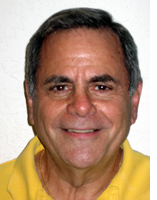 CLEARWATER, Florida—Kevin Youkilis, the Boston Red Sox first baseman, will be among three Jewish ballplayers appearing Tuesday, July 15, in the Major League All-Star Game at Yankee Stadium. He will start for the American League and Milwaukee Brewers outfielder Ryan Braun will start for the National League. CLEARWATER, Florida—Kevin Youkilis, the Boston Red Sox first baseman, will be among three Jewish ballplayers appearing Tuesday, July 15, in the Major League All-Star Game at Yankee Stadium. He will start for the American League and Milwaukee Brewers outfielder Ryan Braun will start for the National League.
Texas Rangers second baseman Ian Kinsler is one of the reserves on the AL roster.
Youkilis' major-league record of 238 games - 2,002 chances - without making an error ended June 7 against the Seattle Mariners.
His nickname is "The Greek God of Walks" and he openly identifies as Jewish. He once told MLB.com "In my religion, the Jewish religion, that's one of the biggest things that's taught, is giving a mitzvah, forming a mitzvah. ... I was always taught as a kid giving to charity. You're supposed to give a good amount of charity each and every year."
According to Wikipedia, on Aug. 8, 2005, while playing for the Red Sox, Youkilis took the field in the ninth inning along with Adam Stern and Gabe Kapler, setting a "record" for the most Jewish players on the field at one time in AL history, and the most in the majors history since four Jewish players took the field in 1941 for the New Yorek Giants.
Braun, nicknamed The Hebrew Hammer (which also was applied to former baseball greats Al Rosen and Hank Greenberg) is a narive of Mission Hills, Calif., and was the 2007 Rookie of the Year. Braun also was added to the list of players who will compete in Monday's Home Run Derby.
He may be contacted at lowittb@sandiegojewishworld.com


ARTS IN REVIEW
All that ends well still can be a problem
By Carol Davis
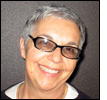 SAN DIEGO—From all accounts Shakespeare’s All’s Well That Ends Well is considered by many to be a problem play. Any time one or both parties considering (or not) of taking their marriage vows are tricked into wedding or bedding someone not to their choosing, well… that’s the basis of Shakespeare’s comedy All’s Well That Ends Well now playing in repertory with Romeo and Juliet and Merry Wives of Windsor through Sept. 26 on the Lowell Davies Festival Stage of the Old Globe. Some might think of this as more of a tragedy than a comedy. SAN DIEGO—From all accounts Shakespeare’s All’s Well That Ends Well is considered by many to be a problem play. Any time one or both parties considering (or not) of taking their marriage vows are tricked into wedding or bedding someone not to their choosing, well… that’s the basis of Shakespeare’s comedy All’s Well That Ends Well now playing in repertory with Romeo and Juliet and Merry Wives of Windsor through Sept. 26 on the Lowell Davies Festival Stage of the Old Globe. Some might think of this as more of a tragedy than a comedy.
Aptly defined in Webster’s Collegiate Dictionary, comedy is: ‘a drama of light and amusing character and typically with a happy ending; or the genre of dramatic literature dealing with the comic or with the serious in a light or satirical manner’. One of the reasons this particular play of Shakespeare’s isn’t mounted as often as, say, Hamlet, Twelfth Night or a host of other more well recognized titles is because of the dubious message and how it’s conveyed through its characters. And before the 20th century it got only ‘qualified or grudging attention’*(Oxford Companion to Shakespeare)
While the term ‘all’s well that ends well’ is probably used more often than the play is credited, the means don’t always justify the ends, or do they? Think of the Biblical trickery we’ve read about and even passed on to our youngsters where moral deceptions (Jacob and Esau, Eve and the old apple and snake trick, Joseph and his brothers for example) appear perfectly justifiable as a means to an end. There are Biblical scholars, though, who have more to say on that subject than this humble reviewer.
Let’s start off with the good news about this production. Old Globe’s associate artistic director Darko Tresnjak is directing this piece. Tresnjak, who not only claims fame to being associate artistic director of the Old Globe, is also as he has been for the past five years, artistic director of the Summer Shakespeare Festival. Two years ago Tresnjak directed the Recovered Voices Program in L.A. as part of a series to explore and present music by composers, mostly Jewish, suppressed by the Naz’s (of course our art collections were good enough to confiscate to be shown later by them, but that’s another story). Tresnjak, a native of Yugoslavia, told me he has a soft spot in his heart for these works.
Now, back to Will. While “AWTEW” has its share of deceptions under Trejneck’s watchful eye, he has managed a modicum of believability. Firstly he places the time in 19th century Paris, Florence and Italy where class either made you or broke you. Then as he has done in the past, he adds his quirky humor to the supporting characters, particularly using Bertram’s pal Perolles (Bruce Turk steals the show with his antics) as a rouse and Lavatch (Eric Hofmann) the Countess's servant to run loose while letting the main characters show their true faces. In reality, however turn about is fair play as it’s Parolles who in the end deceives his master after suffering humiliation by his own comrades’ hands. (Tresnjak takes on this one show while Richard Seer directs Romeo and Juliet and Paul Mullins, Merry Wives of Windsor)
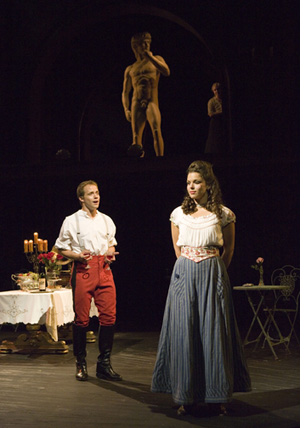 In AWTEW's second act, while the characters are in 19th century Florence strolling the streets and enjoying cappuccino in outdoor cafes, the curtain opens to a huge statue of Michelangelo’s David standing on a top landing (Ralph Funicello) overlooking the action in full frontal view and with an exaggerated everything including a head of sculptured longish hair in all his splendor. It stood there throughout the second act actually a sight to bring chuckles even to Shakespeare’s audiences. I’m guessing there was more attention bought to this spectacle than all of the Bard's references to loss of virginity (“You cannot choose but loose it”), holding on to it (“Virginity breeds mites much like a cheese…”). His characters were pretty much consumed with this topic of the day, another of those not so funny running jokes. (The bad news) In AWTEW's second act, while the characters are in 19th century Florence strolling the streets and enjoying cappuccino in outdoor cafes, the curtain opens to a huge statue of Michelangelo’s David standing on a top landing (Ralph Funicello) overlooking the action in full frontal view and with an exaggerated everything including a head of sculptured longish hair in all his splendor. It stood there throughout the second act actually a sight to bring chuckles even to Shakespeare’s audiences. I’m guessing there was more attention bought to this spectacle than all of the Bard's references to loss of virginity (“You cannot choose but loose it”), holding on to it (“Virginity breeds mites much like a cheese…”). His characters were pretty much consumed with this topic of the day, another of those not so funny running jokes. (The bad news)
Briefly, if one can condense Shakespeare, Bertram (Graham Hamilton) son of Countess Rossillion (Kandis Chappell) is called to court in France by the terminally ill King (James R. Winker) of whom he is a ward. Meanwhile, back at home, Helena (Kimberly Parker Green) a ward of the Countess
has been smitten with Bertram for many years, unbeknownst to him. Claiming that she (Helena) has the secret to cure the terminally ill King because her late father was a physician and she has all his notes she convinces the Countess to send her to Paris where…dada, Bertram is.
Hoping to make a long story even shorter, Helena cures the King after he promises he will grant her any husband she chooses from his Knights to be her husband. Cured of whatever ailed him, the King who is now looking fit as a fiddle and in full dress regalia (Linda Cho) is only too anxious to please Helena. (And you guessed for whom her bell tolled.) Upon hearing the news of the King's promise to Helena, Bertram pouts and wines like a spoiled child because Helena is far beneath his station and his plans do not include ever marrying her. He threatens (even though they marry per the Kings order) never to consummate the union until she can take a certain ring from his finger and can prove a child she has begotten by him.
She is sent back to Rossillion and Bertram heads off to Italy for a bit of action, fun frolicking, acting like a jerk and a little stint in the military. Not to be outdone by this spoiled twit, she disguises herself as a pilgrim and heads off to Florence where she hatches a plan to get what she wants. Without ‘giving anything else away’ you might guess by the title how the play ends.
This first offering of the Globe’s Summer Festival, one not seen often and for good reason, does however have some fine moments and acting worthy of mention. As stated earlier, both Turk and Hoffman are a riot and provide all the tomfoolery to give audiences something to chuckle about. Kandis Chappell, San Diego favorite and Globe associate artist, is just right as the concerned, tight jawed and understanding Countess and James R. Winker, another favorite is just as convincing as the King.
Kimberly Parker Green, one of the many Globe/MFA students rotating in all the Shakespeare shows this summer, is more believable than not as Helena. Unfortunately for her (character) the only time she can let her hair down and look like she’s having some fun is after she plays her ‘I gotcha card’ on the spoiled Bertram. Graham Hamilton’s Bertram aint the warmest fuzzy on the stage as he struts his egotistical self between his conquests and his selfishness, but he does get his payback. Both Diana (Vivia Font), Bertram’s latest squeeze, and her mother Widow Capulet (Celeste Ciulla) who are engaged by Helena in the plot to subvert Bertram are two shining stars perfectly portraying the ‘let’s help each other out girlfriend’ mantra to Helena’s trickery. One would like to think the handsome couple lived happily ever after. When all is said and done, however, all ends well that is, well… capitulated.
See you at the theatre.


THE JEWISH CITIZEN
Scholarly, easy-to-read work tells of San Diego places people are dying to get into
Cemeteries of San Diego by Seth Mallios and David M. Caterino, “Images of America,” Series, Arcadia Publishing, 127 pages, $19.99
By Donald H. Harrison
 SAN DIEGO—Sharp Cabrillo Hospital is built on the grounds that once housed San Diego’s first Jewish cemetery, donated to the community by pioneer Louis Rose. S-h-h-h-h! Don’t tell the patients there's a former cemetery below. We wouldn’t want any of them to become discouraged! SAN DIEGO—Sharp Cabrillo Hospital is built on the grounds that once housed San Diego’s first Jewish cemetery, donated to the community by pioneer Louis Rose. S-h-h-h-h! Don’t tell the patients there's a former cemetery below. We wouldn’t want any of them to become discouraged!
Arcadia’s “Image of America” series offers local authors a compromise between publishing their own works and having their works published by someone else. Under the arrangement, books follow a pattern of approximately two-thirds photographs and one-third text, all to be supplied by the authors. As historical photographs, such as those in the collection of the San Diego Historical Society, can be quite expensive to purchase, it is a proposition that can cost authors quite a bit of money—if they don’t have source of photographs of their own.
In Cemeteries of San Diego, Arcadia created a partnership with two scholars with excellent credentials, whose deep knowledge about San Diego is evident not only in the text but in their photo selection. Moreover, co-authors Seth Mallios and David M. Caterino had access to photographs, lot of them!
Mallios, an anthropology professor at San Diego State, and Caterino, coordinator of SDSU’s South Coastal Information Center, worked together on the San Diego Gravestone Project, in which students photographed headstones and copied cemetery records to put together a data base that continues to yield new knowledge about San Diego County’s past. The South Coastal Information Center is an archaeological research arm of San Diego State University funded by government grants to collect, analyzed and distribute archaeological data.
The book includes San Diego’s Jewish cemeteries among those of other religious and ethnic groups, with fine results from the standpoints of both general knowledge and local Jewish knowledge. There is a little known photograph of the old Jewish cemetery, showing an unidentified man standing behind the tombstone of Bertha Barnett before her body and those of other pioneers buried in that cemetery were exhumed and moved to the Home of Peace Cemetery. Unfortunately the records were not well kept, and the exact location of some of those bodies—including Rose, San Diego’s first Jewish settler—are not known. The stone for Rose at the Home of Peace is a memorial rather than a grave marker. One of the problems in those days was that grave markers often were carved onto wood, which rotted over time.
The book also includes three pages on the Home of Peace Cemetery, with a photo of a section of the cemetery and close-ups of the gravestones of Marcus and Rebecca Schiller; and of Joseph Mannasse and Hannah Mannasse and their daughter Celita. Marcus Schiller and Joseph Mannasse were longtime partners in the wholesale trading firm of J.S. Mannasse & Co., and were also brothers-in-law as Hannah Mannasse was the sister of Marcus Schiller. Both men served on the Board of Trustees of the City of San Diego: Mannasse on the board that sold Alonzo Horton the land for “Horton’s Addition,” which eventually became San Diego’s downtown, and Schiller on the board that set aside public lands for the city park that later became San Diego’s cultural jewel, Balboa Park. At one time the partners owned much of modern-day Encinitas and San Dieguito, where they grazed the cattle often paid to them by other ranchers in exchange for goods.
One assertion in a caption that was too sweeping read: “While there is an interdenominational modern American trend toward small, flat grave markers, Jews do not follow this mortuary tendency. They prefer more traditional upright granite tablets…” In fact, there are numerous Jewish cemeteries where the flat grave markers are used, among them the King David section of Greenwood Cemetery where my mother-in-law, Sydel Zeiden, rests in peace. Whenever someone tries to characterize what “the Jews” do or think about anything, it can be a problem. Between Humanist Jews and the Haredim, our practices are so broad-ranging as to defy easy generalization.
Two Jews buried in San Diego are singled out for their celebrity: Jonas Salk (whose marker simply gives his dates of birth and death, Oct. 28, 1914-June 23, 1995; and scientist William Aaron Nierenberg (February 13, 1913-September 10, 2000), former director of the Scripps Institution of Oceanography, whose plaque include two Jewish stars placed symmetrically on either side of his surname and a quotation from Proverbs 1:13: “Happy is the one who finds wisdom, the one who attains understanding.”
Some non-Jews singled out for similar attention in this section are Milburn Stone (“Doc” of the old Gunsmoke television series; entertainer William Boone “Billy” Daniels; McDonald empire builders Ray A. Kroc and Joan Kroc; National Football League Commissioner “Pete” Rozelle; and beer brewer Joseph Coors.
The methodology of the book provides us with a sense of what might be found in the far more extensive San Diego Gravestone Project. Chapter One dealt with cemeteries dating back to San Diego’s Spanish and Mexican periods (but not back to the pre-European contact indigenous periods). Chapter Two includes 14 pioneer cemeteries begun between the mid and late 1800s. This chapter includes the first Jewish cemetery. The third chapter deals with sprawling “mega cemeteries” such as the city-operated Mount Hope where such historical figures lie buried as Alta Hulett, first female attorney in the United States; “Sam” Brannan, a Mormon merchant who became California’s first millionaire; Thomas and Anna Whaley, for whom the historic Whaley House in Old Town San Diego is named; Kate Morgan, the “ghost” of the Hotel del Coronado; downtown founder Alonzo Horton; Hotel del Coronado builder Elisha Babcock; Balboa Park’s original tree planter Kate O. Sessions, mystery writer Raymond Thornton Chandler, and Nathan Harrison, a freed slave who was a popular figure of the 19th century.
The fourth chapter deals with the military cemetery at Fort Rosecrans, potentially a book in itself; the fifth deals with “fanciful cemetery myths,” debunking for example the quaint idea that Ted “Dr. Seuss” Geisel’s ashes are inside the statue of him at UCSD. In fact, his widow Audrey Geisel keeps them privately in an urn. The sixth chapter explores cemetery trends in San Diego, and the final chapter discusses how names of the past are interwoven into San Diego’s present.
In all, it is a fine book, which may stimulate readers to further investigate San Diego history on their own.
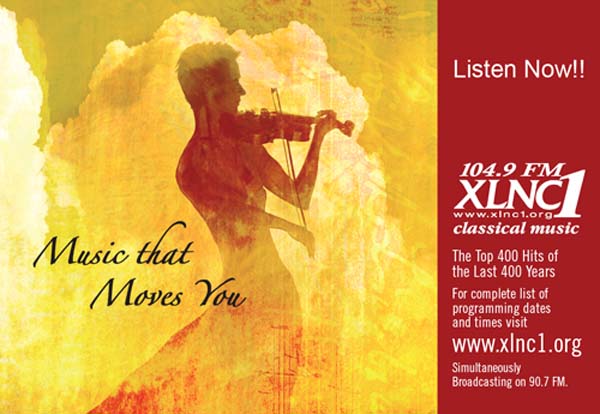


ADVENTURES IN SAN DIEGO JEWISH HISTORY
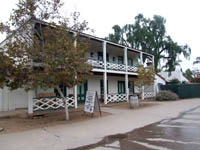
Robinson-Rose House
|
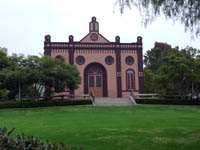
Old Temple Beth Israel |
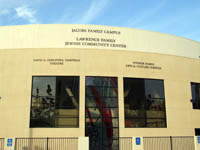
Lawrence Family JCC |
Editor's Note: We are reprinting news articles that appeared in back issues of various San Diego Jewish newspapers. You may access an index of the headlines of those articles by clicking here. You may also use the Google search program on our home page or on the headline index page to search for keywords or names.
Jewish Labor Com
From Southwestern Jewish Press, July 3, 1947, page 6
To round out the three day holiday this week-end, be sure to attend the annual picnic of the Jewish Labor Committee which will take place Sunday, July 6th, at Pepper Grove in Balboa Park. The delicious Kosher home-cooked turkey dinner will be served at a nominal cost by the very capable Mr. Sandor Goldberger and his able committee.
All proceeds of this picnic will go to further the wonderful work being done in Europe for the Jewish orphans; to help build schools and homes for them; to provide clothing, food and other necessities that go to making a normal child’s life.
Ben Feinberg, chairman of the local Jewish Labor Committee, urges everyone to enjoy this fine affair Sunday and help this group with their project at the same time. He especially wishes to tell all mothers to take the opportunity to get out of their kitchens, to bring their families to this picnic and enjoy the home-cooked turkey dinner. Service will start at 12 noon. For tickets, please call M-2566 or M-6598.
Birdie Stodel B.B.
From Southwestern Jewish Press, July 3, 1947, page 6
Now that B’nai B’rith has successfully weathered another convention, its inspiration and well conceived program for carrying out the work of the organization must be nurtured by each Chapter. In conformity with the Grand Lodge, the fiscal year will now be from June to June and so as announced last week, the first fund raising activity will be a luncheon and social afternoon to be held on July 17th, under the chairmanship of Martha Feiler and Selma Lindenfeld. A detailed report will be given at the next meeting but in the meantime all members are urged to keep this date in reserve.
The next meeting will be held on July 14th at which time Rabbi Baruch Stern will be the guest speaker and it is hoped there will be a record attendance to meet this distinguished newcomer to San Diego.
At the meeting the supply of canned goods brought in was quite meager and since the chairmen of the “Adopted Family” project, Ruth Brav and Edith Bennett are anxious to ship their first package without further delay, they ask members who have not yet done so to bring canned foods to the next meeting on July 14th.
The Donor Luncheon Committee, Ruth Aronoff, Chairman, with Celia Schwartz and Bess Borushek, Co-Chairmen, will have a report to give on the progress of this important project, so let us hope that the July 14th meeting will have a record-breaking attendance.
Yo-Ma-Co
From Southwestern Jewish Press, July 3, 1947, page 6
The election of officers was the highlight of a lively spirited meeting in which campaign speeches and close voting kept the members on edge. Candidates selections for presiding officer narrowed down to two swell capable guys, active Manny Hafner and popular Phil Goldman. The results showed that the Yo-Ma-Cos have reelected Phil Goldman who has done a fine job as President. Likeable Alice Solomon no doubt will do well as vice president. Irvin Kravitz, a newcomer, but determined to succeed in the role of treasurer. Charlotte Friedlander is quite capable to take over as recording secretary, while Tully Kitaen I sure to make proper contact as corresponding secretary. David Cohen, a jack of all trades, will carry on as sergeant-at-arms. There you have the new staff of officers, which will assume responsibility after the big Installation Dinner Affair scheduled July 13th at Shalimar. Watch next week’s column for more details.
Herman and Blossom Cohen were voted into membership.
Hooray!! Our softball team finally won behind good pitching, timely hitting, spectacular catches and lustful cheering by the loyal rooters. Even the split trousers of Dave Schwartz was a thing to behold! Later the team went to Henry Goldy’s new place of business to wish him good luck.
There will be an open meeting next Wednesday, July 9th, at 8:30 p.m. at which time the feature spot of the evening will be a very interesting debate—the subject: “Resolved, that Terroristic activities in Palestine are furthering the aims of Zionism.” Everyone is welcome to attend. Meetings are hled at the Landis Street Center on Highland and Landis Streets.
Pioneer Women
From Southwestern Jewish Press, July 3, 1947, page 6
Time is passing all too quickly and there is not to much time left to give to the promotion of the Donor Dinner, actually four or more short weeks. Some of the chaveros are leaving for vacations which shortens our women power somewhat.
The next regular meeting will be held on Thursday, July 3rd, at 12 noon, following the regular non-profit luncheon. All members attend and bring a report of their progress in working for the Donor Diner and Tenth Anniversary Celebration. In the fact of unsurmountable obstacles that confront our sisters in Palestine, we should by all means feel humble in the thought that we recognize their problems and contributions in not only salvaging the remnants of Jewish lives but helping them to regain strength and usefulness again.
The following is an extract from the article “That They May Live,” which appeared in the May 1947 issue of The Pioneer Woman. “By 1943 our chaveros of the Moatzath Hapoaloth had undertaken the task of Child Rescue on a large scale. They not only opened the doors of their institutions to receive those children fortunate enough to reach Eretz Israel, but have been working ceaselessly to rescue as many children as possible. Most of the women who volunteered to go to the European camps from the Jewish Agency are members of the Moatzath Hapoaloth, which trained and mobilized them for service among the Jewish survivors in Europe. Their mission was not only to bring relief, but also to help them regain their strength, courage and hope, and to prepare them for eventual emigration to Palestine.
The Moatzath Hapoaloth maintains regular contact with these emissaries by means of a bulletin informing them of conditions in Palestine and offering various practical suggestions for their work and plans. Legal immigration of the children from Europe is limited, but the work of the Moatzath Hapoaloth is the help those as well as the so-called illegal Aliyah—seeking them out leading them on the long, weary journey through Europe, to new life and security in Palestine. As Dvorah Rothbard so aptly stated at a meeting, “Ships do not move alone!”
The proceeds of the Donor Dinner go to meet the Moatzath Hapoaloth quota and its success depends on the efforts of each and every member of the Pioneer Women’s Organization.
DEDICATIONS WANTED—Every one of these stories rescued from the yellowing and disintegrating archives of Southwestern Jewish Press will be permanently archived here on the website of San Diego Jewish World. In this way, we believe, we are making the history of our community accessible to researchers, and at the same time are preserving the memories of community members and organizations that came before us. We urge our readers to consider dedicating an installment of "Adventures in San Diego Jewish History" to a family member or friend, living or dead, and thereby add their names to our archives. Dedications cost only $18 (Chai). Surprise someone on a birthday, or anniversary, or other special event with an online greeting, or mark a yahrzeit. Your instructions accompanied by your check (and telephone number in case we need clarification) may be sent to San Diego Jewish World, PO Box 19363, San Diego, CA 92159.

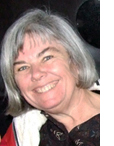 Nancy Harrison Nancy Harrison
cruise & tour specialist
(619) 265-0808

SAN DIEGO JEWISH WORLD THE WEEK IN REVIEW
Middle East
The cause of freedom, then and now by Shoshana Bryen in Washington, D.C.
Volunteers psychologically counsel people, repair houses in rocket-scarred regionby Ulla Hadar in Kibbutz Ruhama, Israel
San Diego
New Americans Museum celebrates some of this country's richest blessings by Donald H. Harrison in San Diego
Adventures in San Diego Jewish History
—July 3, 1947: Palomar Camp Will Be Site Of Outdoor Activities
—July 3, 1947: Representatives of Agencies Meet in Temple
—July 3, 1947: Day Camp is Popular For Many Children
—July 3, 1947: San Diego Prepares For Post-USO
Arts
Two Yiddish books to tickle the silly bone by Sheila Orysiek in San Diego
Middle East
—Stopping Iran's growing nuclear threat by U.S Congressman Bob Filner in San Diego
Environmentalism
—Sometimes 'brown' is better than 'green' by Sheila Orysiek in San Diego
San Diego
Governor Grille, a kosher meat restaurant, makes its debut at Chabad-University City by Donald H. Harrison in San Diego
Adventures in San Diego Jewish History
—June 26, 1947: Birdie Stodel B.B.
—June 26, 1947: Pioneer Women
—June 26, 1947: Jewish Labor Com.
—June 26, 1947: Jolly Sixteen
Arts
The Joker: from Catskills to Gotham City by Rabbi Simcha Weinstein in New York
Rose burdened with too many thorns by Cynthia Citron in Los Angeles
Middle East
Peres: Peace with Palestinians not possible by Ira Sharkansky in Jerusalem
Judaism
The joy and enthusiasm of new Jews by Rabbi Leonard Rosenthal
The Chofetz Chaim and the Russian soldier by Rabbi Baruch Lederman
Adventures in San Diego Jewish History
—June 26, 1947: Living Memorials For the Dead {Editorial}
—June 26, 1947: Lasker Lodge B.B.
—June 26, 1947: Day Camp's First Week Big Success
Sports
July 4th baseball: Thunder in skies, also in the stands at Storm game in Lake Elsinore by Donald H. Harrison in Lake Elsinore, California
A bissel sports trivia with Bruce Lowitt in Clearwater, Florida
Middle East
Few parallels between U.S. operations in Afghanistan, Iraq and Israel-Palestine by Ira Sharkansky in Jerusalem
California and San Diego
What does the state budget proposal say about California's moral compass? by Gary Rotto in San Diego
How do you spell tikkun olam? G-R-E-E-N by Donald H. Harrison in San Diego
San Diego Jewish Trivia: Movies by Evelyn Kooperman in San Diego
Adventures in San Diego Jewish History
—June 19, 1947: Yo-Ma-Co
—June 19, 1947: Birdie Stodel B.B.
—June 26, 1947: Eli Levenson Elected To Executive Comm. of B'nai B'rith
—June 26, 1947: Hearings to Be Held On U.J.F. Allocations
Arts
Klezmer with knishes, juice and 'p'stromi' by Carol Davis in San Diego
Chapter Fifteen of Reluctant Martyr, a serialized book by Sheila Orysiek in San Diego
Middle East
Carnage again stalks Jerusalem's buses by Judy Lash Balint in Jerusalem
Victory in Iraq is well-worth fighting for by Shoshana Bryen in Washington, D.C.
Biking can make you and planet more fit by Ulla Hadar in Kibbutz Ruhama, Israel
United States of America
American Jewish civics quiz for July 4 by Sheila Orysiek in San Diego
San Diego
Confronting abuse in the Jewish community by Rabbi Jeff Brown in Cardiff by the Sea, California
Adventures in San Diego Jewish History
—June 19, 1947: Hashomer Hatzair to Have Summer Camp
—June 19, 1947: Program Completed for Day Camp
—June 19, 1947: Jewish War Vets
Arts
Thursdays with the songs of Hal Wingard
—#247, Dieting
—# 308, Great New Diet
—# 74, Bad Booze Blues
Middle East
'Standupistim'—That's Hebrew for 'Stand Up comics'—wow 'em in Israel by Judy Lash Balint in Jerusalem
Only in Israel? A Tale of Four Chickens by Dorothea Shefer-Vanson in Mevasseret Zion, Israel
Australia
The Jews Down Under, Jewish news of Australia and New Zealand by Garry Fabian
Progessive view on Rabbi Jonathan Sacks ... Historic agreement on emergency management ...Graeme Samuel explains silence on Pratt case ... Being 'green' is the Jewish thing to do .. Salary hikes impact on Jewish school ... New Zealand's Jewish Community doubly celebrates ...
Australia -Israel link on celluloid...Antisemitism after the Holocaust
San Diego
The 20-gallon challenge; can you save water each day, help preserve Earth's resources? by Donald H. Harrison in San Diego
Adventures in San Diego Jewish History
—June 19, 1947: U.J.F. Campaign Continues
—June 19, 1947: Newcomers to Country Welcome Baby Boy
—June 19, 1947: Francis W. Parker School Packs 20 Boxes for S.O.S.
—June 19, 1947: Temple Sisterhood Sponsor New Project
Lifestyles
When the extended family met at the grandparents' house in Newark, N.J. by Gail Feinstein Forman in Newark, N.J.
Link to previous editions
< BACK TO TOP
|
|
